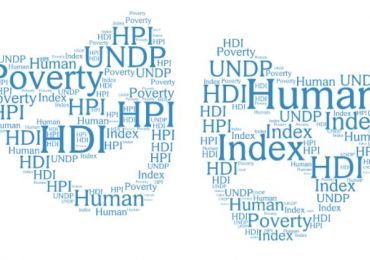The Human Poverty Index (HPI) devised by United Nations (UN) which gave an indication of the standard of living in a country. It complemented the Human Development Index (HDI) and was first reported as part of the Human Development Report in 1997.

What is the human poverty index (HPI-1 and HPI-2)?
Traditionally poverty has been measured as lack of income—but this is far too narrow a definition. Human poverty is a thought that catches the numerous dimensions of poverty that exist in both poor and rich nations – it is the refusal of decisions and chances for carrying on with a life one has motivation to esteem.
The HPI-1—human poverty index for developing countries—measures human deprivations in the same three aspects of human development as the HDI (longevity, knowledge and a decent standard of living).
HPI-2— human poverty index for selected high-income OECD countries—includes, in addition to the three dimensions in HPI-1, social exclusion.
For HPI-1 (developing countries): deprivations in life span are measured by the probability at birth of not surviving due to age 40; deprivations in information are measured by the rate of grown-ups who are illiterate; deprivations in a respectable expectation for everyday comforts are measured by two variables: the rate of individuals not having maintainable access to an enhanced water source and the rate of youngsters underneath the age of five who are underweight.
For HPI-2 (selected high-income OECD countries): deprivations in life span are measured by the probability at birth of not achieving age of 60; deprivations in information are measured by the rate of mature people needing practical proficiency aptitudes; deprivations in an average expectation for everyday comforts are measured by the rate of individuals living underneath the income poverty line, set at half of the balanced average family disposable salary; and social rejection is measured by the rate of long haul (12 months or more) unemployment of the work power.
How is the HPI used?
- To guide national planning for poverty alleviation. Many National Human Development Reports now break down the HPI by region or other socioeconomic groups to identify the areas or social groups within the country most deprived in terms of human poverty. The results can be dramatic, creating national debate and helping in reframing and reshaping of policies.
- To focus attention on the most deprived people and deprivations in basic human capabilities in a country, not on average national achievement. The HPI focuses directly on the number of people living in poverty—presenting a very different picture from average national achievement. It also moves the focus of poverty debates on other concerns also and not poverty alone.
- To shed light on the presence of human poverty in both the rich/poor or developed/undeveloped countries. High per capita income is no guarantee of a poverty-free country. Even in the richest countries, there is human poverty. The HPI-2 for selected high-income OECD countries (HPI-2) reveals that out of 17 European and North American countries, the U.S. has the 2nd highest per capita income , but also the highest rate of human poverty.
Read about BPL Identification in India, What is a Slum, Causes of Urban Poverty